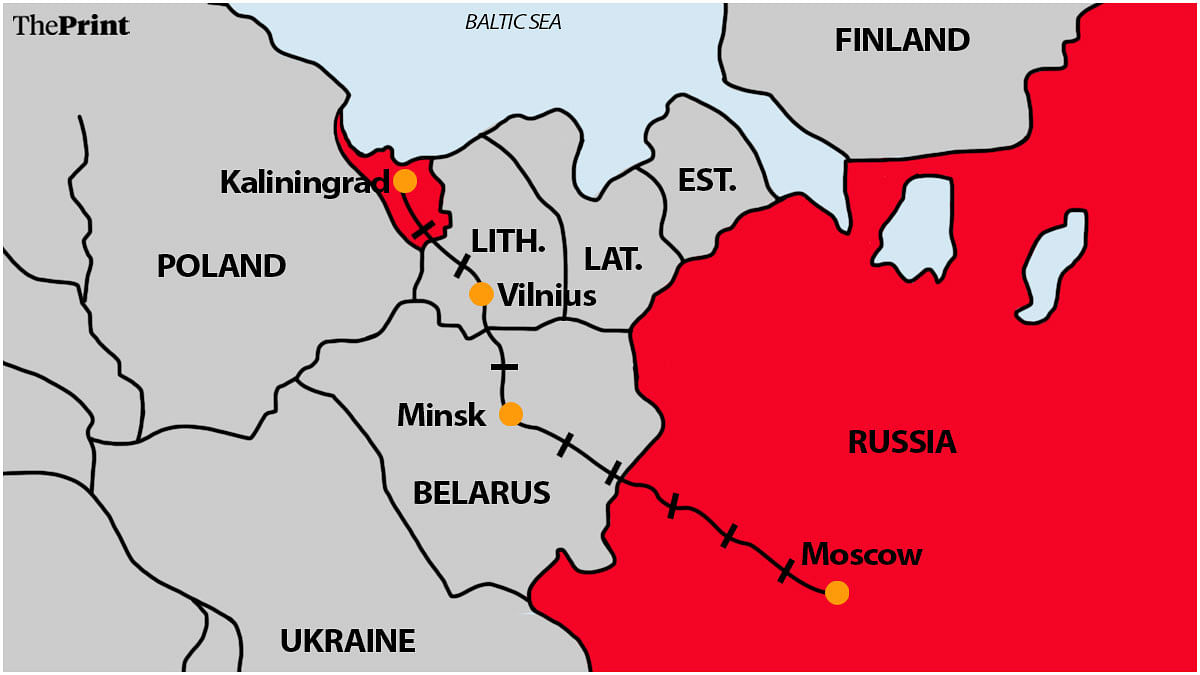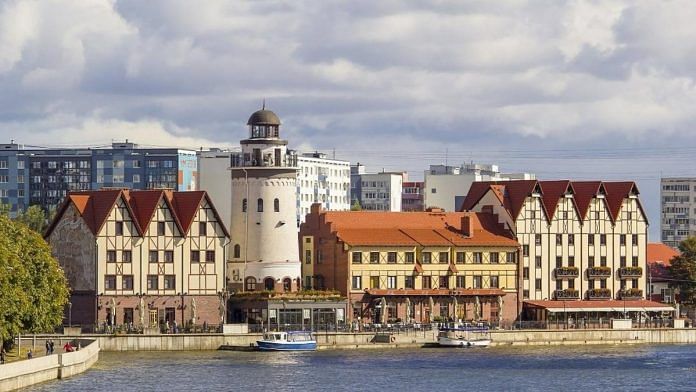New Delhi: Over the past couple of months, Kaliningrad, a unique Russian territory, became a flashpoint between Moscow and the European Union (EU).
Kaliningrad is an exclave of Russia — a portion of a country’s territory that is completely surrounded by other countries. It falls on the southern coast of the Baltic Sea, and is sandwiched between Lithuania and Poland.
It hit the headlines Wednesday night, when EU member state Lithuania said it would not block the transit of goods sanctioned by the European bloc between Kaliningrad and Moscow.
In light of the Russia-Ukraine war, Moscow is currently facing several economic sanctions from the West.
Since mid-June, Lithuania had been blocking the goods under EU sanctions from being transported between Kaliningrad and mainland Russia through a 618-km rail line, which passes through Lithuania and Belarus.

Prohibited items included coal, metals, concrete, wood and other goods. Videos that have emerged since have shown purported panic-buying at Kaliningrad’s construction supply stores.
Russia had termed Lithuania’s ban an “illegal blockade” and threatened “harsh measures” if it was not lifted. Lithuania’s reversal follows a decision by the European Commission.
Kaliningrad is militarily significant for Russia because its port city of Baltiysk is Moscow’s only port on the Baltic Sea that is free of ice throughout the year.
In 2013, Moscow worried European neighbours of Kaliningrad when reports emerged that it was moving nuclear-capable missiles into the exclave.
Also Read: Sanctions and stamina — How the West can defeat Vladimir Putin
What is Kaliningrad?
At 223 square kilometres, Kaliningrad is roughly the size of Kolkata, and home to about 1 million people.
The majority of the people are Russians, followed by other groups such as Ukrainians, Belarusians, Lithuanians, and Germans.
It is one of the few exclaves that exist in the world. Other examples are Nakhchivan, which is a part of Azerbaijan but is located in Armenia, and Alaska, which is a part of the US but can be reached by road only through Canada.
How did Kaliningrad become part of Russia?
Kaliningrad’s history is intertwined with that of Germany and Russia.
The territory gets its name from Bolshevik revolutionary Mikhail Kalinin, who served as the head of state of the Soviet Union from 1919 to 1946.
Kalinin was a nominal head and therefore did not not hold much real power or influence. He retired in 1946 and died the same year.
Until 1945, the area was known as Königsberg, a German city. It once served as the capital of East Prussia. German philosopher Immanuel Kant was born there, back when it was under German control. There are still traces of the territory’s German heritage as can be seen in the Brandenburg Gate, built in 1657 as part of fortifications of the territory.
It underwent restoration work in 1843 and sculptures of major Prussian military figures were added.
After World War 2, however, Germany handed it over to the Soviet Union. Kaliningrad was one of the most militarised and closed off-parts under Soviet control.
(Edited by Sunanda Ranjan)
Also Read: Indian companies look towards sanction-ravaged Russia to expand their operations



